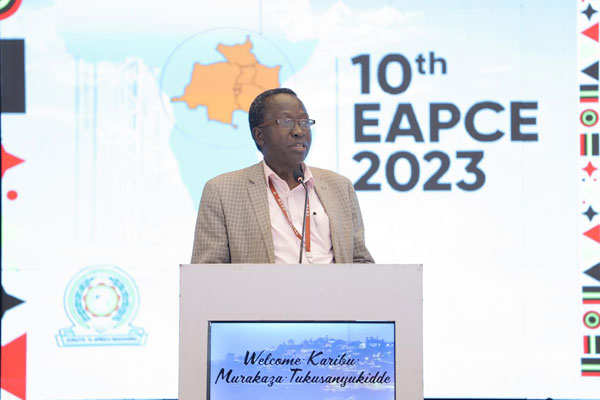Prime
Ministry of Finance accused of stalling oil local content fund

Mr Honey Malinga, the Ministry of Energy acting director of Petroleum Directorate speaks during an update meeting of the East Africa Petroleum Conference and Exhibition. Photo / Courtesy
What you need to know:
- The fund among others will be used for skills development including education, training, research and development, and enterprise development.
The ministries of Energy and Finance are locked in hide and seek over establishment of a national content fund.
The fund, details indicate, seeks to avail an avenue through which local businesses involved in the oil and gas sector can access affordable credit.
Its establishment is one the highlights of the national content policy for the petroleum subsector formulated six years ago.
The fund, according to the policy, will among others, be used for skills development including education, training, research and development, and enterprise development.
Inflows to the fund would come from levies from oil contractors, operators, contractors, subcontractors, alliance partners or any other entity involved in the oil and gas sector.
Industry players told Monitor at the weekend there have been several discussions on the matter but all attempts have been bounced by Ministry of Finance.
An industry player, who requested anonymity to speak freely, said the Ministry of Finance said there was no policy to guide such, which after it was developed, the ministry said there was need for a regulatory frame work, before demanding for a law to operationalise the fund.
“As we contemplated all this, then they told us we need a certificate of financial implication. As sector people we know how important the fund is but we are always in circles with (Finance),” the source said. The fund had sought to help local oil and gas players to access affordable credit to prepare adequately - for the Final Investment Decision - when oil companies would announce investment of between $10b and 15b in the development phase, leading to commercial oil production.
Access to affordable credit largely remains a challenge for many businesses in Uganda, where lending rates by commercial banks remain obscenely high.
The oil and gas sector is highly capital intensive, therefore, it requires both patient and affordable capital.
As of December 2022, commercial bank lending rates, according to the Ministry of Finance, averaged at 18.91 percent.
This is worsened by an increase in government’s domestic borrowing, which often crowds out local businesses.
In the capital intensive oil sector businesses have been urged to form joint ventures and other partnerships as a way around the problem, but not necessarily as an antidote.
With local businesses not fully participating it means a big chunk of money invested will go back to foreign capitals where the main contractors with financial muscle are hired from.
For instance, of the 92 tenders totaling $1b (Shs3.6 trillion) for provision of goods and services awarded for the Kingfisher project in 2022, Ugandan companies accounted for $270m (Shs985b) mainly in the areas of civil works, hospitality management, transportation and ICT. The numbers are not any better for Tilenga.
During an update meeting last Friday for the East Africa Petroleum Conference and Exhibition, which is due in May, Mr Sam Kajojo, a director of one of the local construction firms that has worked on Kingfisher, said the absence of such a fund has pushed many players into acquiring expensive loans.
“Yes, we are in business but after servicing a loan you find that one is not where they would want to be,” he said.
Uganda Development Bank - which offers financial interventions in government’s development priorities - currently doesn’t facilitate provision of medium and long term financing to businesses in oil and gas.
However, whereas, Mr Honey Malinga, the Ministry of Energy acting director of the petroleum directorate acknowledged the delay, he said a law is needed to guide establishment of the local content fund.
“Our hands are also tied here, but we are engaging UDB and Uganda Investment Authority,” he said.
Petroleum conference
Uganda will, between May 9 and 11, host the East Africa Petroleum Conference and Exhibition, which is expected to attract local, regional, and international players in the oil and gas sector.
The conference was established in the early 2000s as a forum for the regional countries to showcase local and regional oil potential.




